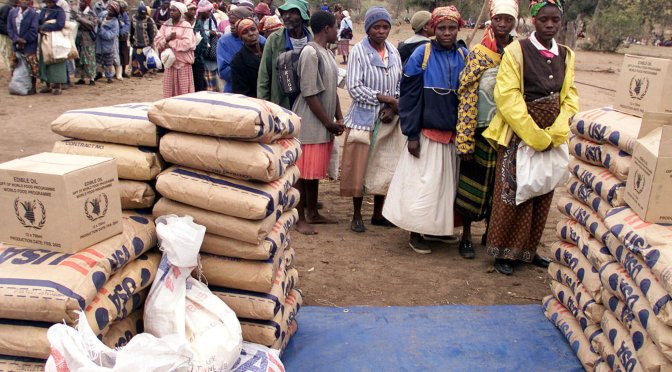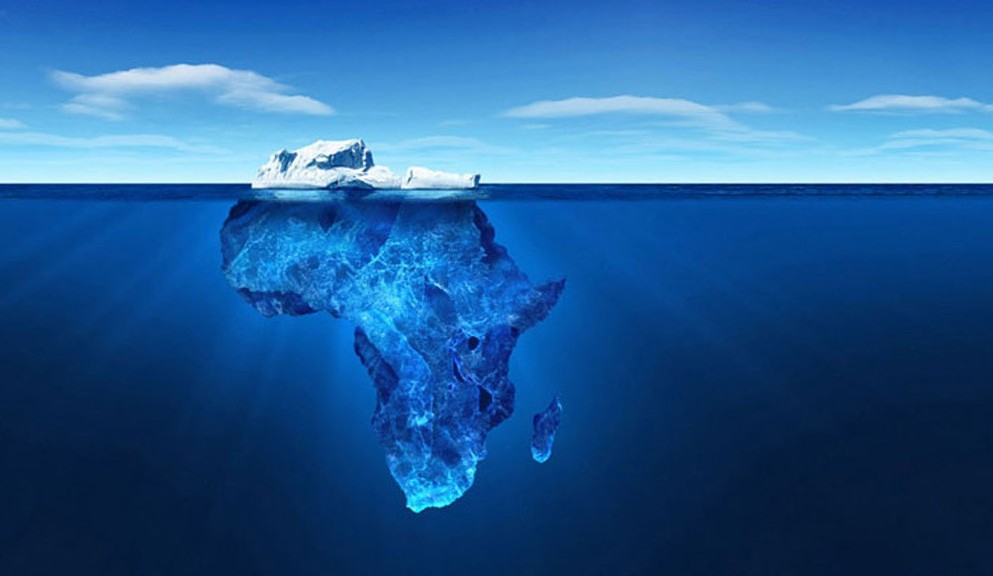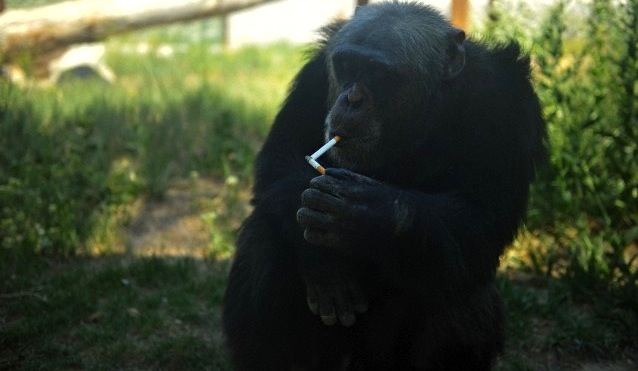One trope you run into again and again when you deal with food security issues is the idea that what African farmers need the most is just to be left alone to do their thing. In this view, African farmers know exactly what they’re doing, have been doing it well for centuries, and stand only to lose from encroachment from rapacious outsiders pushing new, profit-driven technologies that will alienate them from their land, their role as environmental stewards, and their traditions.
This Noble Savage retread came up most recently in Global Justice Now’s #FreeTheSeeds campaign. The punchline, nicely encapsulated in a quote by Ugandan seed activist Beatrice Katsigazi, goes something like:
“Women farmers have few resources and do not want seed that we can plant for one season only or seed that is owned by companies. We believe in our own seeds that we can access from our own collections or from our farmer networks, free of charge.”
Let’s kick the tires on this claim; look under the hood to see how well it really runs.
First off, there’s no question that saved seed and informal seed trading have been the norm in Uganda, basically, forever. Even today, more than 80% of the seed sown in Uganda is saved or informally traded in this way (by some estimates, the number is closer to 90%).
That was true in 1960, when Uganda had to feed 6.8 million people from the food it produced on 7.8 million acres of farmland under cultivation, and it remains true today, when Uganda has to feed 37.6 million people on 16.7 million acres under cultivation. (You see where this is going, right?)
A couple of generations ago, Uganda had 1.15 acres of farm land per person. Now, it needs to feed each person on what it produces on less than half an acre. Just to keep people at the same level of consumption as back in 1960 – and let me assure you Uganda was no eater’s paradise back in 1960 – Ugandan farmers need to be more than two and a half times as productive as they used to be.
The Uganda we have today looks nothing like the Uganda of even our grandparents’ time.
Are they? Not by a long shot.
As has been very widely documented, agricultural productivity has flat-lined in much of sub-saharan Africa in recent decades, and Uganda is no exception. The political chaos of the 1970s and early 80s makes it impossible to get data from that era, but we do know Agricultural Value Added stood at $213 per worker in 1982 and at $210 in 2013, the latest date for which we have figures available.
Cereal yields have risen – from 1.6 tons per hectare in 1983 to 2.1 in 2013 – but not nearly fast enough to keep up with a population that’s nearly tripled in that period.
You start to see the problem with the argument that Africans just need to be left alone to do what they’ve always done shielded from the evil designs of outside capitalists: the Uganda we have today looks nothing like the Uganda of even our grandparents’ time. Massive improvements in health and sanitation have set off a population explosion that’s put enormous new pressures on resources.
In Uganda, where the tradition is for farms to be divided as they’re passed down from one generation to the next, one outcome has been the increasing fragmentation of farms into small, often tiny farm plots that simply can’t produce enough to sustain the people who live on them without modern agricultural technologies.
The prevalence of undernourishment has actually risen in Uganda, from 27.1% of the population in 1991 to 30.1% in 2013.
In Uganda as a whole, 58% of farms are now smaller than one hectare (2.4 acres) with a great many farmers living on much smaller plots than that. Some families really end up “farming” on plots the size of a suburban North American backyard.
It’s not surprising, then, that farming has expanded into more and more marginal land. Traditional shifting cultivation (a.k.a. slash-and-burn) methods of soil fertility management have become impossible to sustain: you can’t just slash and burn the next field over once yours becomes unproductive, because somebody is farming that field now.
This process is ongoing. Just in the period between 2005 and 2011, the average area farmed per household in Uganda declined by 7%. And with population growth showing no signs of abating, the trend is only set to deepen in years to come.
Not coincidentally, the prevalence of undernourishment has actually risen in Uganda, from 27.1% of the population in 1991 to 30.1% in 2013.
That a Western Advocacy organization should be actively agitating against hybrid seed is…on the far outer fringes of reason.
Nobody who has actually sat down to look at the realities of farming and food security in Uganda in detail can miss the fact that without much better farming technology able to substantially increase yields, these trends are going to continue. Techniques like shifting cultivation that made some sense two generations ago are not viable in the vastly changed social circumstances of 2015.
Improved Seed – no need for scare-quotes here guys, they really are better – when used alongside better agronomic techniques and reasonable amounts of fertilizers, have been shown to multiply smallholder yields up to sevenfold within a single season.
Hybrid maize, for instance, is a 100-year-old technology, proven safe, that can radically transform the life of a poor farming family within a single season, taking them from the edge of subsistence to the kinds of marketable surpluses that allow them to think about things like paying school fees and setting up a solar panel for indoor lighting and phone charging. That a Western Advocacy organization should be actively agitating against this is…on the far outer fringes of reason.
Global Justice Now’s #FreeTheSeed campaign doesn’t even make sense in its own terms: if it’s environmental stewardship you’re concerned with, your priority should be to limit the amount of land under cultivation.
But if you begin by ruling out the key technology farmers need to produce more food on less land, you’re in effect arguing for Ugandan farmers should bring more and more land under cultivation.
At this point the only land left they could conceivably expand into is the very most environmentally sensitive land. Maybe GlobalJusticeNow wants Ugandan farmers to go grow maize on Mountain Gorilla habitats – that’s pretty much all that’s left.
I’m assuming that’s not quite what they had in mind.
But if that’s the case, what they’re arguing for is that Ugandan smallholders should simply starve. Not, of course, that they’re consciously arguing for that, but that that’s the logical outcome of an advocacy campaign that places off limits all the choices they could make to prevent from starving.
Look, Uganda needs realistic, ideology-free thinking on how it can produce enough to feed itself in an increasingly tough agro-ecology, with climate change team-tagging with explosive population growth to put exceptional demands on the land.
Initiatives like #FreeTheSeed, which perversely mobilize public opinion against some of the best methods we know to achieve this, are part of the problem, not part of the solution.












